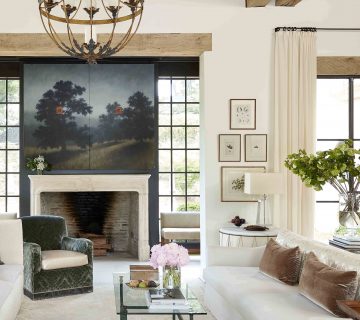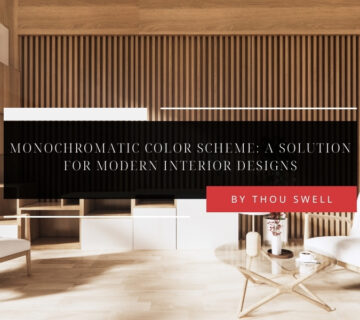Interior lighting design is much more than just selecting the right fixtures and bulbs; it’s about crafting an ambiance that enhances both the aesthetic appeal and functionality of your space. At its core, it involves the strategic placement and selection of light sources to create an inviting environment within any home or commercial setting.
This guide offers everything you need to navigate the complexities of lighting design. We’ll explore the core aspects, from the types of lighting and their psychological impacts to planning and common pitfalls.
Additionally, we’ll share innovative strategies to transform any interior. Whether you’re a novice or a seasoned professional, keep reading for enlightening tips on creating a beautifully lit space that reflects your style and needs.
What Is Interior Lighting Design?
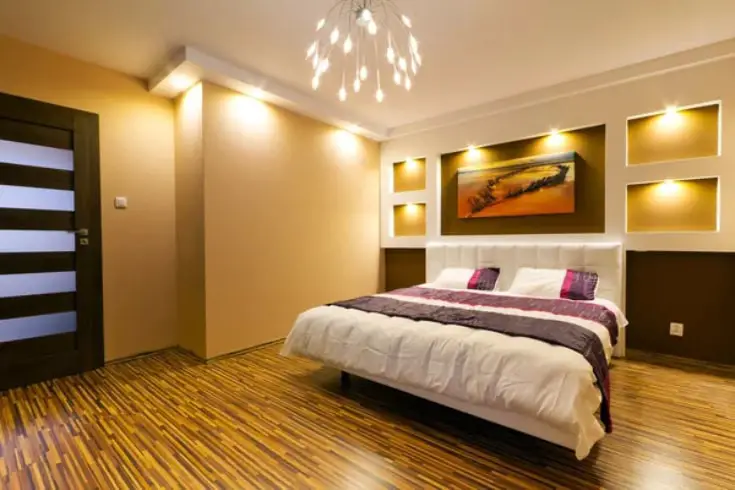
Interior lighting design is the key that transforms a mere room into an inviting space. It’s not just about choosing stylish lamps or fixtures but about crafting the right ambiance.
This design art focuses on how light influences our mood and productivity, integrating different types of light to serve each room’s specific purpose. Ambient lighting offers a room a soft glow, while task lighting makes activities like reading more enjoyable by focusing light where it’s needed most.
Yet, it’s more than functionality. Interior lighting design creatively plays with light and shadow to add depth to spaces, enhancing the aesthetics of our surroundings. It’s a delicate balance of making a room practical and a reflection of our personal style.
In essence, interior lighting design melds technology, creativity, and a touch of psychology, aiming to improve how spaces look and feel. It ensures our environments are not just seen but experienced, enriching our daily lives by making every lighting choice count.
Why Is Lighting Important in Interior Design?
Lighting in interior design is like the soundtrack to a movie—it sets the tone, enhances the mood, and transforms the experience of a space without you even realizing it. It’s crucial for several reasons:
- Mood and atmosphere: Lighting can instantly make a room feel cozy and welcoming or vibrant and energetic. The brightness, color temperature, and direction of light all play roles in eliciting emotional responses from us. A dimly lit room with warm tones can feel intimate and relaxing, whereas bright, cool light can make a space feel more alert and awake.
- Functionality: Good lighting design ensures that a space is beautiful, practical, and usable. Task lighting in a kitchen, for instance, helps in cooking and preparing food safely, while adequate lighting in a study room reduces eye strain and enhances productivity.
- Aesthetic appeal: Lighting can highlight architectural features, artwork, or furniture, drawing attention to the details that make your space unique. It can accentuate textures, colors, and forms, adding depth and dimension to a room.
- Health and well-being: Natural light has been shown to boost mood and productivity, but when it’s not available, well-designed artificial lighting can emulate its benefits. Proper lighting reduces eye strain and can help regulate our circadian rhythms, contributing to better sleep patterns and overall health.
In essence, lighting is a powerful tool in interior design. It’s not just about illumination but about creating experiences and enhancing the functionality, beauty, and well-being of the spaces we inhabit.
What Are the Types of Lighting Used in Interior Design?
In interior design, lighting is not a one-size-fits-all solution. There are several types of lighting, each serving different purposes and creating various effects within a space. Here are the main types used:
Ambient Lighting
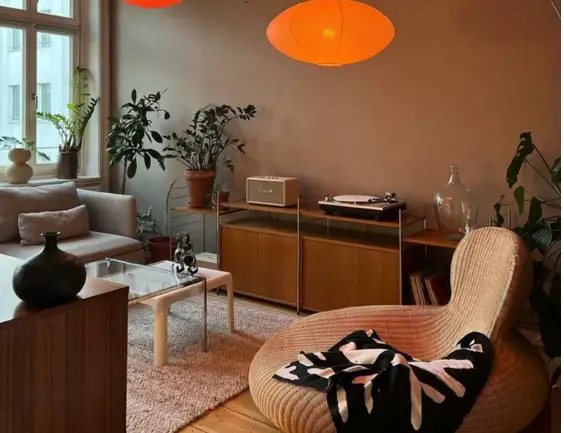
Also known as general lighting, ambient lighting provides a room with overall illumination. It’s the soft, diffuse light that fills the space, allowing you to navigate and see comfortably. Examples include ceiling fixtures, recessed lighting, and natural light from windows.
Task Lighting
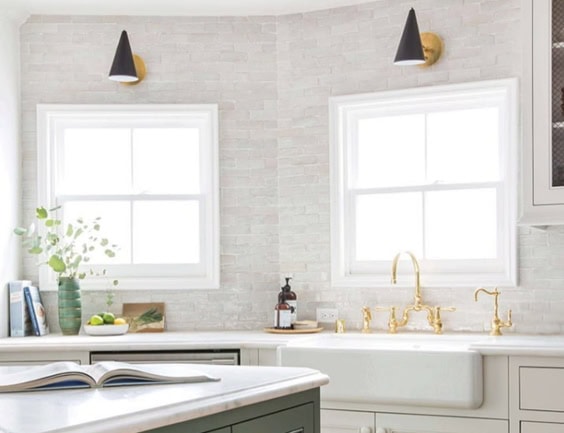
As the name suggests, task lighting is used to illuminate specific areas for tasks like reading, cooking, or working. It’s focused and brighter than ambient lighting, designed to reduce eye strain without causing glare. Desk lamps, under-cabinet lighting, and pendant lights over kitchen islands are common examples.
Accent Lighting
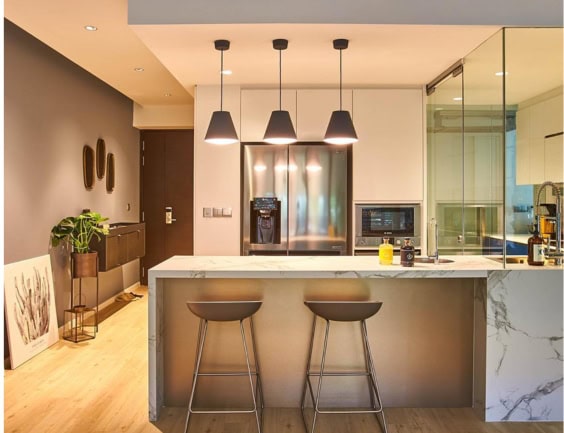
Accent lighting is all about aesthetics. It’s used to highlight architectural features, artwork, or interesting design elements within a room. By creating contrast and directing the eye, accent lighting adds drama and interest. Track lighting, wall-mounted fixtures, and spotlighting are ways to achieve this effect.
Decorative Lighting
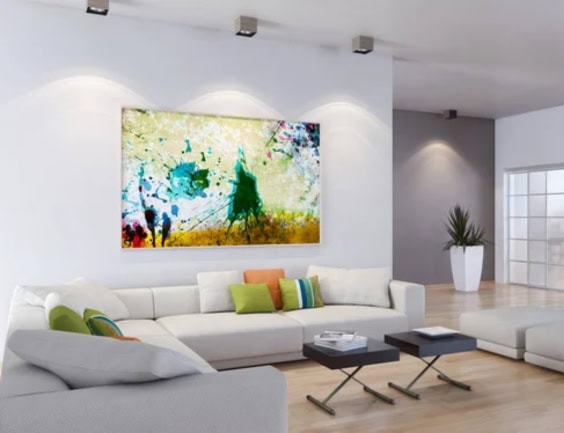
While also serving as ambient, task, or accent lighting, decorative lighting’s primary role is to add visual interest and style to a room. Chandeliers, sconce lighting, and uniquely designed lamps fall into this category, becoming focal points in their own right.
Understanding and combining these types of lighting allows designers to create layered, versatile, and dynamic interiors. Properly executed, a mix of ambient, task, accent, and decorative lighting can transform a space, enhancing both its functionality and its aesthetic appeal.
How Can You Plan Your Interior Lighting Design?
Planning your interior lighting design is like setting the stage for a play. Each light source plays a role, contributing to the overall atmosphere and functionality of your space. Here’s how you can plan effectively:
Assess the Space
Start by considering the room’s size, layout, and natural light availability. Think about how the space is used and at what times of day. This initial assessment will guide your lighting choices, ensuring they enhance the room’s features and meet its needs.
Define the Purpose of Each Area
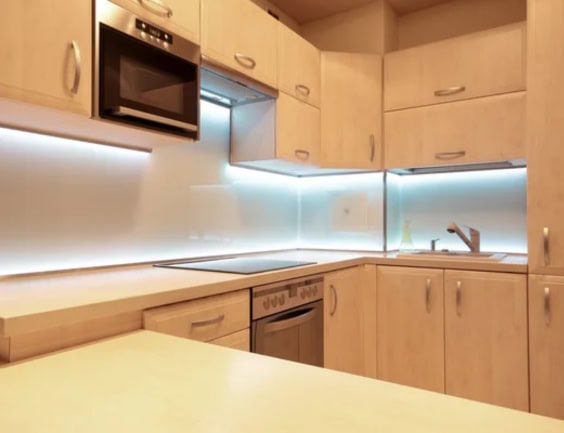
Different activities require different types of lighting. Identify areas within the room that need task lighting, such as reading nooks or kitchen counters. Consider where ambient lighting will be most effective and where accent lighting could highlight art or architectural details.
Consider the Mood
Lighting dramatically affects the mood of a room. Decide on the ambiance you want to create—warm and cozy, bright and airy, or perhaps a flexible space that can shift from inviting to efficient. Your choice of light fixtures and bulbs, from their style to their color temperature, will play a crucial role in achieving this.
Choose the Right Fixtures
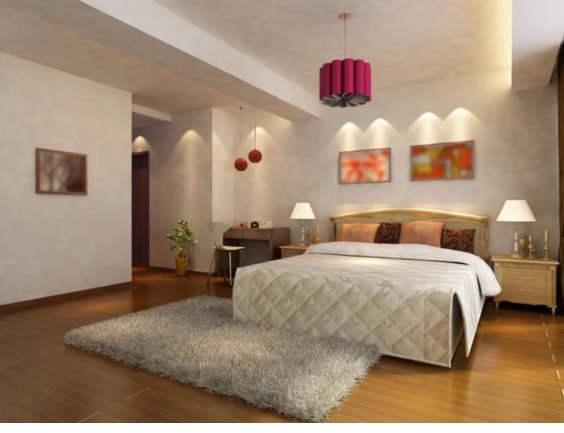
Once you’ve established the needs and mood of your space, select fixtures that serve those purposes. Combine overhead lights, floor lamps, task lighting, and accent fixtures to create a layered lighting scheme. Ensure each fixture complements the room’s decor and the other lighting elements.
Plan for Control and Flexibility
Consider how you’ll control each light source. Dimmers are a great way to adjust the brightness of a room, catering to different activities and times of day. Smart lighting systems offer even more flexibility, allowing you to control lights from your smartphone or with voice commands.
Think Long-Term
Invest in quality fixtures and energy-efficient bulbs. They will save you money in the long run and provide better performance and longevity. Consider LED options for their efficiency and longevity.
Consult with Professionals
If lighting design feels overwhelming or if you’re working on a significant remodel, consulting with an interior designer or lighting specialist can provide tailored advice and innovative ideas you might not have considered.
By following these steps, you’ll craft a lighting plan that looks great and enhances the functionality and mood of your interior spaces.
What Are Some Common Mistakes to Avoid in Interior Lighting Design?
Navigating interior lighting design can sometimes feel like a balancing act. While creating the perfect ambiance and functionality, it’s easy to stumble into common pitfalls. Here are some mistakes to avoid:
- Overlooking layered lighting: Relying solely on one type of lighting, like overhead lights, can make a space feel flat and uninviting. Incorporate a mix of ambient, task, and accent lighting to add depth and dimension.
- Neglecting task lighting: While ambient lighting sets the mood, forgetting about task lighting can lead to insufficient illumination for activities like reading or cooking. Ensure areas requiring focus are well-lit to avoid eye strain.
- Ignoring light control: The ability to adjust lighting levels is crucial. Overlooking dimmers or smart lighting controls limits your ability to alter the atmosphere for different occasions or times of day.
- Using incorrect bulb types: Not all light bulbs are created equal. Using bulbs with inappropriate color temperatures can affect mood and visual comfort. For example, cool white bulbs may feel harsh in a cozy living area intended for relaxation.
- Forgetting about natural light: Natural light is a vital component of interior lighting design. Overlooking the use of natural light can result in spaces that feel disconnected from the outdoors or that use more artificial light than necessary.
- Disregarding shadows and glare: Poorly positioned lighting can create unwanted shadows or glare, which can be especially problematic in workspaces. Planning fixture placement carefully can mitigate these issues.
- Skimping on fixture quality: Opting for cheaper, low-quality fixtures might save costs upfront but can lead to more expenses and hassle in the long run. Investing in quality lighting fixtures pays off in longevity and performance.
- Ignoring aesthetic cohesion: Each fixture should serve a functional purpose and complement the room’s overall design. Mismatched lighting fixtures can disrupt a space’s aesthetic harmony.
By being mindful of these common mistakes, you can approach interior lighting design with a clearer vision, ensuring that your spaces are both beautifully illuminated and perfectly functional.
How to Incorporate Ambient Lighting in Your Design?
Incorporating ambient lighting into your design is about creating a base layer of light that sets the overall mood of a space. It’s the gentle glow that fills a room, softening shadows and making it welcoming. Here’s how to weave ambient lighting seamlessly into your interior design:
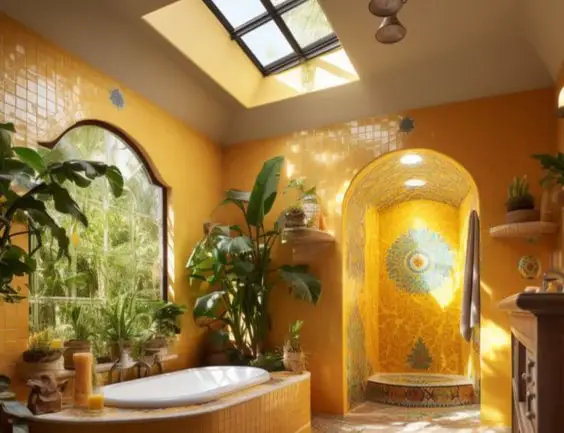
- Harness natural light: Start by maximizing natural light, which is the ultimate ambient light source. Use sheer curtains or strategically placed mirrors to enhance and distribute sunlight throughout the room during the day.
- Choose the right fixtures: For artificial ambient lighting, select fixtures that cast light evenly across the space. Flush mounts, chandeliers, wall sconces, and recessed lighting are excellent options. Consider the size of the room and the ceiling height to ensure the fixture provides adequate light without overwhelming the space.
- Opt for warm light: Bulbs with a warm color temperature (around 2700K to 3000K) create a cozy, inviting atmosphere. LED bulbs marked as “warm white” are a good choice for most living spaces, providing a soft radiance that mimics the warmth of incandescent bulbs.
- Use dimmers: Installing dimmer switches allows you to adjust the brightness of your ambient lighting to suit different times of day or activities. Dimmers are particularly useful in living rooms, bedrooms, and dining areas where the mood might change from bright and active to soft and serene.
- Layer with other lighting types: Ambient lighting should serve as the foundation of your lighting plan, but it’s essential to layer it with task and accent lighting for functionality and visual interest. For instance, while ambient lighting provides the overall light, you might add table lamps for reading (task lighting) or LED strips under cabinets to highlight decor (accent lighting).
- Consider smart lighting solutions: Smart bulbs and lighting systems offer unparalleled control over ambient lighting. You can adjust brightness, turn lights on or off, or change colors (if using RGB LEDs) directly from your smartphone or through voice commands, allowing for real-time customization of your space’s ambiance.
- Experiment with placement: The placement of ambient lighting fixtures can significantly impact the feel of a room. For example, installing a centrally located fixture or several smaller fixtures spread out can distribute light differently, changing the room’s perceived size and coziness.
Remember, the goal of ambient lighting is to create a comfortable level of brightness without glare, allowing you to enjoy your space to its fullest. With these tips, you can craft a beautifully lit environment that welcomes, warms, and enchants.
Can Innovative Lighting Design Transform a Space?
Absolutely! Innovative lighting design has the power to transform any space, turning the mundane into the extraordinary. It’s not just about illumination but about creating an experience and evoking emotions. Here’s how innovative lighting can reshape a room:
- Shaping perceptions: Lighting can alter how we perceive the size and ambiance of a space. Bright, uniform lighting can make a small room feel larger and more open, while dimmer, focused light can make a large room feel cozier and more intimate.
- Highlighting features: Through accent lighting, design elements like architectural details, artwork, or unique furniture pieces can become focal points, guiding the eye and changing the room’s dynamic. It’s a way to showcase your style and what you love, adding layers of interest and intrigue.
- Creating mood and atmosphere: With innovative lighting, you can craft atmospheres that range from serene and relaxing to vibrant and energizing. The use of colored lighting, dimmable fixtures, and dynamic light installations can evoke different feelings, making a space adaptable to any mood or occasion.
- Enhancing functionality: Innovative lighting goes beyond aesthetics to improve a space’s usability. For instance, under-cabinet lighting in kitchens adds ambiance and improves visibility for tasks like cooking. Similarly, smart lighting systems can adjust brightness based on the time of day, enhancing comfort and productivity.
- Sustainability and efficiency: Modern lighting innovations include the integration of energy-efficient LEDs and automated systems that adjust lighting based on occupancy or daylight availability. These technologies transform how a space looks and feels and promote environmental responsibility and cost savings.
- Interactive and personalized spaces: Advanced lighting systems allow for personalization and interaction like never before. From lights that change color based on your mood to systems that can be programmed for different scenarios or activities, lighting can create an environment that reflects and responds to the individuals who use it.
In summary, innovative lighting design is a powerful tool in transforming spaces. It can redefine the ambiance, highlight beauty, improve functionality, promote sustainability, and offer personalization, making every room a space to inhabit and an experience to relish. Whether it’s a home, office, or public space, the right lighting can completely change its character and how it’s perceived and enjoyed.
Where to Find Inspiration for Your Interior Lighting Design?
Finding inspiration for your interior lighting design can be both exciting and overwhelming, given the abundance of sources available today. To help you spark creativity and envision the perfect lighting plan for your space, here are some valuable resources:
- Design magazines and books: Architectural and interior design magazines are treasure troves of high-quality photographs and articles showcasing the latest trends, innovative designs, and expert advice. Similarly, design books can offer comprehensive insights into the theory and practice of lighting design.
- Online design portals and blogs: Websites like Houzz, ArchDaily, and Dezeen feature countless interior design projects, including detailed information on lighting solutions. Blogs run by interior designers or lighting experts are also great places to find tips, DIY ideas, and case studies.
- Social media: Platforms like Pinterest and Instagram are fantastic for visual inspiration. By searching for hashtags like #InteriorLighting, #LightingDesign, or #ModernLighting, you can discover a vast array of images ranging from DIY projects to professional interior designs.
- Showrooms and design centers: Visiting lighting showrooms or design centers in person allows you to see different fixtures up close, understand how they emit light, and even consult with in-house experts. It’s a great way to get a feel for what you like and what would work in your space.
- Art and architecture: Sometimes, inspiration comes from outside the interior design world. Exploring art galleries, historical buildings, or modern architecture can open your eyes to unique lighting applications and creative approaches that you can adapt to your interior.
- Nature: Don’t underestimate the inspiration that can come from natural light and environments. Observing how sunlight interacts with landscapes and indoor spaces can provide insights into creating comfortable, dynamic lighting schemes that mimic the outdoors.
- Trade shows and design expos: These events are hotspots for the latest innovations in lighting technology and design. They offer a glimpse into future trends and are an excellent opportunity for networking with professionals who can offer insights and inspiration.
When seeking inspiration, remember to keep an open mind and think about how different ideas can be adapted to suit your specific needs and preferences. Lighting design is deeply personal, reflecting the mood, style, and functionality you want to achieve in your space. Gather ideas from a variety of sources, and don’t be afraid to blend them to create a lighting plan that’s uniquely yours.
Conclusion
Mastering interior lighting design unleashes the full potential of any space, transforming it from mere rooms to vibrant, inviting environments. This guide has walked you through the essentials—from understanding the various types of lighting, such as ambient, task, and accent, to planning your design and avoiding common pitfalls.
Remember, the right lighting can dramatically alter a room’s mood, functionality, and aesthetic appeal. Now, armed with these insights, we encourage you to experiment with your interior lighting design.
Start crafting spaces that not only look beautiful but also resonate with your unique style and needs. Ready to illuminate your world? Let your creativity shine, and embark on your lighting design journey today!
